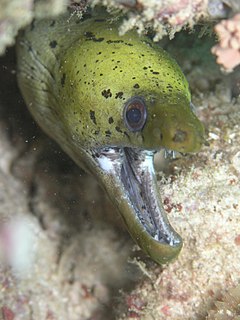Related Research Articles

The Polynesian narrative or Polynesian mythology encompasses the oral traditions of the people of Polynesia together with those of the scattered cultures known as the Polynesian outliers. Polynesians speak languages that descend from a language reconstructed as Proto-Polynesian - probably spoken in the Tonga - Samoa area around 1000 BC.
Māui (Maui) is the great culture hero and trickster in Polynesian mythology. Very rarely was Māui actually worshipped, being less of a deity and more of a folk hero. His origins vary from culture to culture, but many of his main exploits remain relatively similar.
Haumea is the goddess of fertility and childbirth in Hawaiian mythology. She is the mother of many important deities, such as Pele, Kāne Milohai, Kāmohoaliʻi, Nāmaka, Kapo, and Hiʻiaka. Haumea is one of the most important Hawaiian gods, and her worship is among the oldest on the Hawaiian islands. She was finally killed by Kaulu.
Tangaroa is the great atua of the sea, lakes, rivers, and creatures that live within them, especially fish, in Māori mythology. As Tangaroa-whakamau-tai he exercises control over the tides. He is sometimes depicted as a whale.
Tongan narrative is a variant of a more general Polynesian narrative in Tonga.
In Samoan mythology, Atu was the first man on Fiji and Tonga.
Pulotu is the resting place of those passed on in the Polynesian narrative of Tonga and Samoa, the world of darkness "lalo fonua".
Tongan is an Austronesian language of the Polynesian branch native to the island nation of Tonga. It has around 187,000 speakers. It uses the word order verb–subject–object.

Haʻamonga ʻa Maui is a stone trilithon located in Tonga, on the eastern part of the island of Tongatapu, in the village of Niutōua, in Heketā. It was built in the 13th century by King Tuʻitātui in honor of his two sons. The monument is sometimes called the "Stonehenge of the Pacific".
In Tongan mythology, Taufa was a sea god worshipped by chief Tungi of East Tongatapu and by the royal family of Tonga because he cured the Tongan king George I.

In Hawaiian religion, Māui is a culture hero and ancient chief who appears in several different genealogies. In the Kumulipo, he is the son of ʻAkalana and his wife Hina-a-ke-ahi (Hina). This couple has four sons, Māui-mua, Māui-waena, Māui-kiʻikiʻi, and Māui-a-kalana. Māui-a-kalana's wife is named Hinakealohaila, and his son is named Nanamaoa. Māui is one of the Kupua. His name is the same as that of the Hawaiian island Maui, although native tradition holds that it is not named for him directly, but instead named after the son of Hawaii's discoverer.
The Rotumans are Polynesians and are the indigenous inhabitants of Rotuma, a small island group forming part of the Republic of Fiji. The island itself is a cultural melting pot at the crossroads of the Micronesian, Melanesian and Polynesian divisions of the Pacific Ocean, and due to the seafaring nature of traditional Pacific cultures, the indigenous Rotuman have adopted or share many aspects of its multifaceted culture with its Melanesian, Micronesian and Polynesian neighbours.

Mangarevan narrative comprises the legends, historical tales, and sayings of the ancient Mangarevan people. It is considered a variant of a more general Polynesian narrative, developing its own unique character for several centuries before the 1830s. The religion was officially suppressed in the 19th century, and ultimately abandoned by the natives in favor of Roman Catholicism. The Mangarevan term for god was Etua.

Cook Islands mythology comprises historical myths, legends, and folklore passed down by the ancient Cook Islanders over many generations. Many of the Cook Islands legends were recited through ancient songs and chants. The Cook Islands myths and legends have similarities to general Polynesian mythology, which developed over the centuries into its own unique character.

Tuvaluan mythology tells stories of the creation of the islands of Tuvalu and of the founding ancestors of each island. While on some of the islands there are stories of spirits creating the islands, a creation story that is found on many of the islands is that te Pusi mo te Ali created the islands of Tuvalu; te Ali is believed to be the origin of the flat atolls of Tuvalu and te Pusi is the model for the coconut palms that are important in the lives of Tuvaluans. The strength of this belief has the consequence that Moray eel are tapu and are not eaten.
Leutogi was a Polynesian goddess, originally a Samoan princess later turned goddess, and once worshiped in the Samoan archipelago in the central South Pacific ocean.